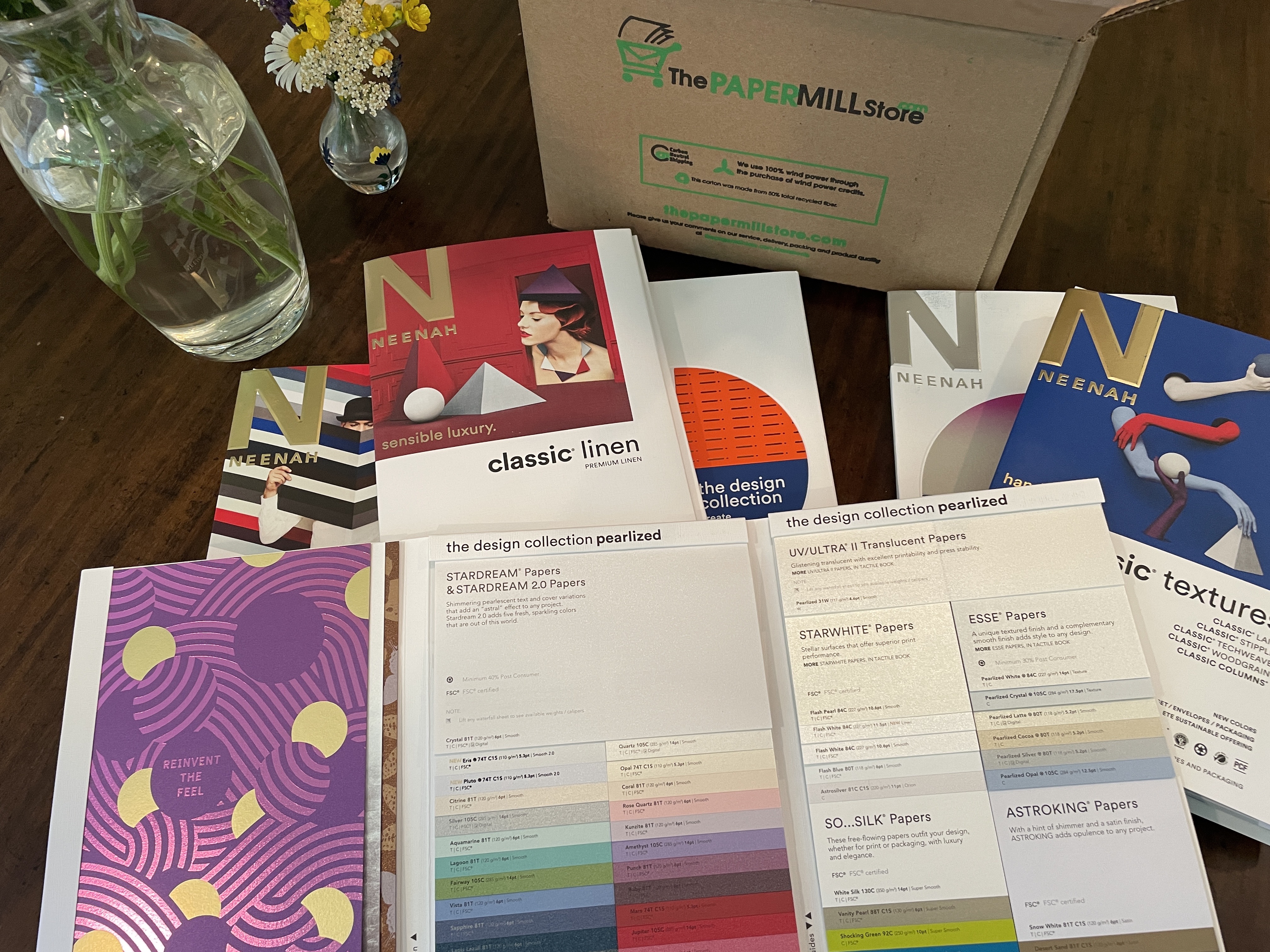Make an Impact with Paper

One thing that might set your business card—or postcard, or any other printed marketing material for that matter—apart from the rest could be a unique paper. There are many interesting varieties of paper that could not only contribute to your branding, they could also help establish it.
Do you have a stack of business cards on your desk like I do? Do they all seem to be on the same white, matte cover stock? Is there one that is printed on paper that has a texture or grain, or an unusual finish. Does that one seem a little more sophisticated, professional, memorable?
Choosing a good paper does not have to be a boring decision. There are so many intriguing and even whimsical choices of paper out there. Just a few of the fun finishes in the swatchbooks from Neenah Papers that recently arrived at my studio are “Leatherlike” (great for a fashion-oriented business, or a Harley dealer!), “Touché” (smooth and velvety coverstock, would make a memorable brochure cover), and “REEF” (“evokes fine sand, sea stones and coral”). There are also many interesting textures including Woodgrain, Linen, and Eggshell that are perfect for a sophisticated stationery package, or a corporate brochure cover. There are pearlized papers, metallic papers, transparent papers, bright papers, soft papers…a paper for every design project you can think of.
So how should you choose a paper for your print project? Here are a couple good websites to get started:
The Paper Mill Store Browse through papers by size, weight, and finish; orders swatchbooks
Mohawk Connects Browse the papers, order samples, swatchbooks or printed samples
If you are overwhelmed by all the paper choices, your local graphic designer or printer will be able to help you sort through the options and provide insight on the best weight and finish for your project. Printers will sometimes provide a paper dummy in your stock choice so you can decide if you like it before having those 500 brochures printed. You can order samples from many paper companies and printers, sometimes at no cost to you.
The next time you want to promote your business with something printed, don’t neglect to think about what kind of impact you could make with an engaging paper. The time to think about paper choice is at the beginning of the project, right along with the design concept, typography, branding, and target audience. It’s an integral part of the overall design and should not be an afterthought. A bold paper choice may be a bit more expensive, but it could be the difference between what gets thrown in the recycling bin and what does not.
